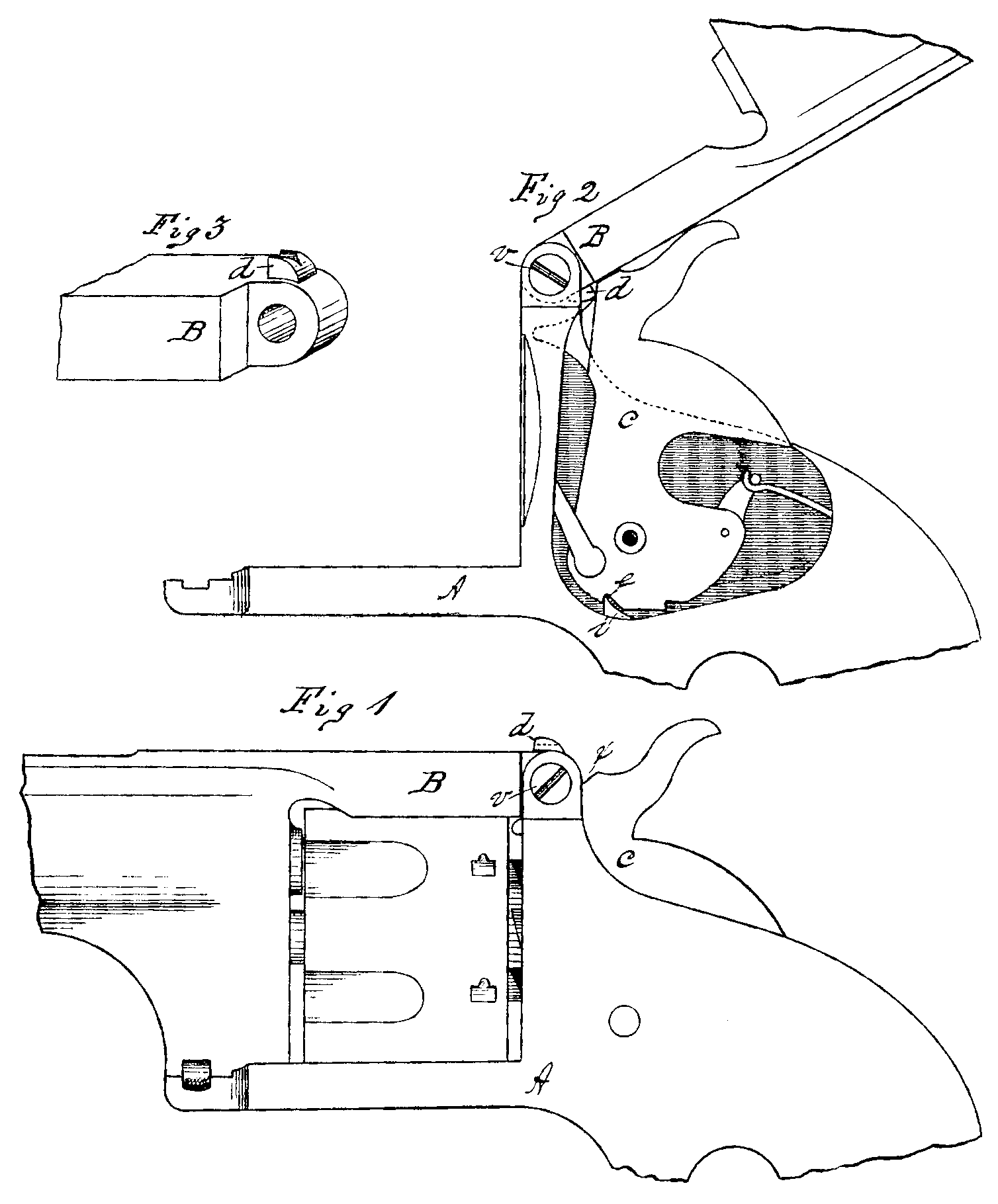USA 248223
UNITED STATES PATENT OFFICE
DEXTER SMITH, OF SPRINGFIELD, MASSACHUSETTS.
REVOLVING FIRE-ARM.
SPECIFICATION forming part of Letters Patent No. 248,223, dated October 11, 1881 Application filed August 31,1881. (No model.)
To all whom it may concern:
Be it known that I, DEXTER SMITH, a citizen of the United States, residing at Springfield, in the county of Hampden and State of Massachusetts, have invented new and useful Improvements in Revolving Fire – Arms, of which the following is a specification.
This invention relates to improvements in revolving fire-arms in which the barrel is hinged to the frame in the rear of and above the cylinder, the object being to improve the construction of such arms by providing means by which the hammer is brought to a half-cock by the swinging-movement of the barrel when the arm is opened for the purpose of reloading.
In the drawings forming part of this specification, Figure 1 is a side elevation of the central portion of a revolving fire-arm constructed according to my invention. Fig. 2 is a similar view to the last-named one, but showing the position of the hammer when the barrel has been swung over to the rear; and Fig. 3 is a perspective view of the rear hinged part of the barrel.
In the drawings, B indicates the rear hinged part of the barrel. A is the frame of the arm. d is a half-cock cam-block on the part B. c is the hammer. e is the half-cock notch on the hammer, and i is the trigger.
In arms of this class and construction it is desirable that the hammer should be automatically brought to a half-cock position when the arm is opened to eject empty shells and to reload, so that when the arm is again closed up and the cylinder is filled with loaded cartridges the nose of the hammer may occupy a safe position at a distance from the heads of the cartridges.
The construction of the arm herein shown is of the ordinary description, excepting the novel devices hereinafter described, whereby the above-mentioned half cocking is accomplished.
On the rear part, B, of the barrel, directly over the pivot-screw v of the hinge, I place the cam-block d, which also serves as a rear sight.
The front edge of the hammer c is formed as at x, Fig. 1, presenting an inclined face, against which said cam-block strikes when the barrel of the arm is thrown over from the position it occupies in Fig. 1 to that indicated by the position of the part B in Fig.2. Thus by swinging said part B over, as in Fig. 2, the action of the cam-block d against the edge of the hammer c causes the latter to be swung over to a half-cock position, so that. the trigger i can drop into the half-cock notch e on the hammer, and ‘ there retain the latter for the purpose above set forth.
What I claim as my invention is-
The combination, with the hammer c, of a revolving fire-arm, of the cam-block d, secured to the rear hinged portion, B, of the barrel, and adapted to strike against the front edge of said hammer when the arm is opened, substantially as and for the purpose set forth.
DEXTER SMITH
Wintesses:
H. A. CHAPING
J. D. GARFIELD

